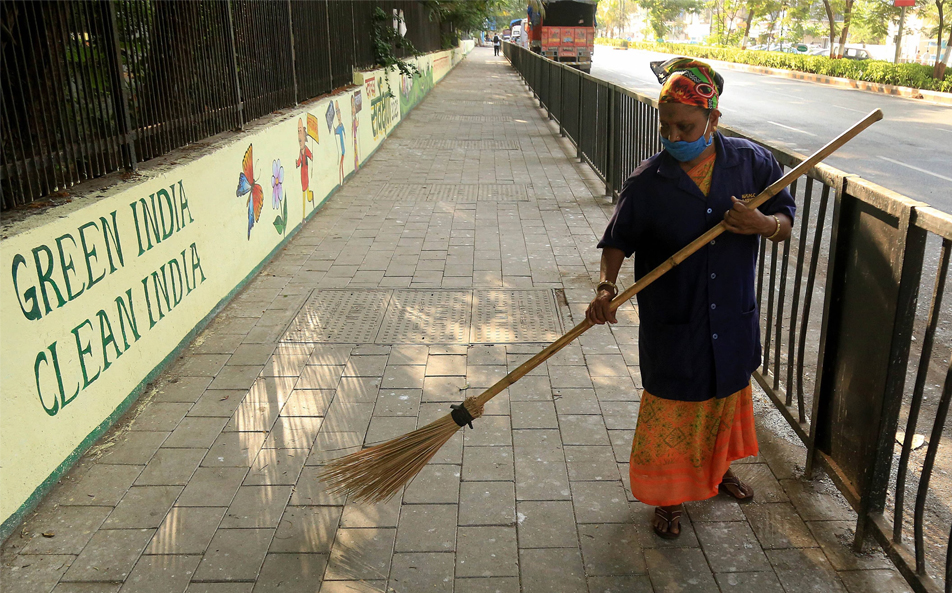
The United Indian

Cleanliness and hygiene are fundamental to public health and well-being. A clean environment prevents the spread of diseases, promotes better health outcomes, and contributes to a higher quality of life.
Talking about India, its journey toward improved sanitation and hygiene has been remarkable, marked by significant achievements and transformative initiatives. The country's commitment to cleanliness, particularly through the Swachh Bharat Mission (SBM), has resulted in substantial progress across both urban and rural landscapes.
Defining Cleanliness: Key Metrics and Achievements
The assessment of cleanliness in India relies on several crucial metrics that provide a comprehensive picture of the nation's hygiene status. One of the primary indicators is the Open Defecation-Free (ODF) status, which has shown impressive progress with 5,61,422 villages achieving ODF Plus status. This achievement is further validated by the verification of 2,32,115 villages as ODF Plus Model Verified, demonstrating the sustainability of these initiatives.
Solid waste management, another critical parameter, has seen systematic implementation across 4,75,210 villages. The introduction of innovative programs like GOBARdhan, which now operates over 990 functional community Biogas Plants, showcases India's commitment to sustainable waste management solutions. These facilities not only address waste disposal challenges but also contribute to clean energy production, creating a circular economy model at the grassroots level.
Access to clean drinking water, a fundamental aspect of public health, has witnessed remarkable improvement. Current statistics reveal that over 14.24 crore rural households, representing 73.93% of the total, now have tap water supply in their homes. This achievement marks a significant milestone in India's journey toward universal access to clean water, directly impacting public health and quality of life.
Leading by Example: India's Cleanest Cities
The Swachh Sarvekshan Awards 2023 highlighted outstanding achievements in urban cleanliness, with several cities setting benchmarks for others to follow. Indore, Madhya Pradesh, maintained its position at the top, showcasing consistent excellence in urban cleanliness management. Surat, Gujarat, and Navi Mumbai, Maharashtra, secured the second and third positions respectively, demonstrating the successful implementation of comprehensive cleanliness initiatives.
The top 10 cleanest cities represent diverse geographical regions, including Ambikapur (Chhattisgarh), Mysore (Karnataka), Vijayawada (Andhra Pradesh), and Ahmedabad (Gujarat), among others. Their success stories offer valuable insights into effective urban cleanliness management strategies and the importance of sustained community engagement.
Swachh Bharat Mission: Transforming Rural and Urban Landscapes
The Swachh Bharat Mission has emerged as a cornerstone of India's cleanliness revolution, with significant achievements in both rural and urban areas. In rural areas under SBM(G), the construction of 31,33,663 Individual Household Latrines (IHHLs) during 2023-24 has substantially improved sanitation infrastructure. The urban component of the mission (SBM-U) has been equally impressive, with 63,10,575 IHHLs constructed during the same period.
The mission's success extends beyond basic sanitation facilities. The development of 4,02,591 ODF Plus Model villages represents a holistic approach to cleanliness, incorporating solid and liquid waste management systems. The establishment of liquid waste management facilities in 5,14,102 villages further demonstrates the comprehensive nature of these initiatives.
Community Participation and Sustainable Solutions
The success of cleanliness initiatives heavily relies on community participation and sustainable practices. Waste segregation at the household level has emerged as a crucial first step in effective waste management. Local clean-up drives have become regular features in many communities, fostering a sense of collective responsibility toward maintaining cleanliness.
Educational institutions and workplaces play a vital role in spreading awareness about hygiene practices. The integration of cleanliness awareness programs in schools helps instill these values in younger generations, ensuring the sustainability of these initiatives.
Challenges and Way Forward
Despite significant progress, challenges remain in achieving universal cleanliness and hygiene standards across India. Urban areas face increasing pressure from growing population density and waste generation, necessitating more robust waste management systems. Rural areas continue to require infrastructure development and behavioral change initiatives to maintain ODF status and improve overall cleanliness.
The way forward involves:
- Strengthening infrastructure for waste management and water supply
- Promoting innovative technologies for sustainable waste treatment
- Enhancing community participation through awareness and incentives
- Developing more efficient monitoring and verification systems
- Encouraging private sector participation in cleanliness initiatives
Individual Contributions Matter
Every citizen has a role to play in maintaining and improving cleanliness standards. Simple yet effective practices like proper waste segregation at home, participation in community clean-up drives, and spreading awareness about hygiene can create significant impact when adopted collectively.
The success stories of India's cleanest cities demonstrate that achieving high standards of cleanliness is possible through coordinated efforts between government agencies and citizens. These cities serve as models for others to emulate, offering proven strategies and best practices.
Conclusion
India's progress in improving cleanliness and hygiene standards reflects a significant shift in public consciousness and government priorities. The achievements under various initiatives, particularly the Swachh Bharat Mission, demonstrate the effectiveness of well-planned and executed cleanliness programs. However, maintaining and building upon these achievements requires continued commitment from all stakeholders.
As we move forward, the focus must remain on sustainable practices, technology integration, and community engagement. The journey toward a cleaner India is ongoing, and each milestone achieved brings us closer to the vision of a hygienically sound and environmentally sustainable nation.
The transformation of India's cleanliness landscape serves as an inspiration for other developing nations, showcasing how determined efforts and community participation can lead to substantial improvements in public health and quality of life. As we continue this journey, the collective responsibility of citizens, coupled with government initiatives, will remain crucial in achieving and maintaining higher standards of cleanliness across the nation.
Read more in Social Cause
Jul 13, 2025
TUI Staff
Jun 28, 2025
TUI Staff

Stay Tuned with The United Indian!
Our news blog is dedicated to sharing valuable and pertinent content for Indian citizens. Our blog news covering a wide range of categories including technology, environment, government & economy ensures that you stay informed about the topics that matter most. Follow The United Indian to never miss out on the latest trending news in India.
©The United Indian 2024









